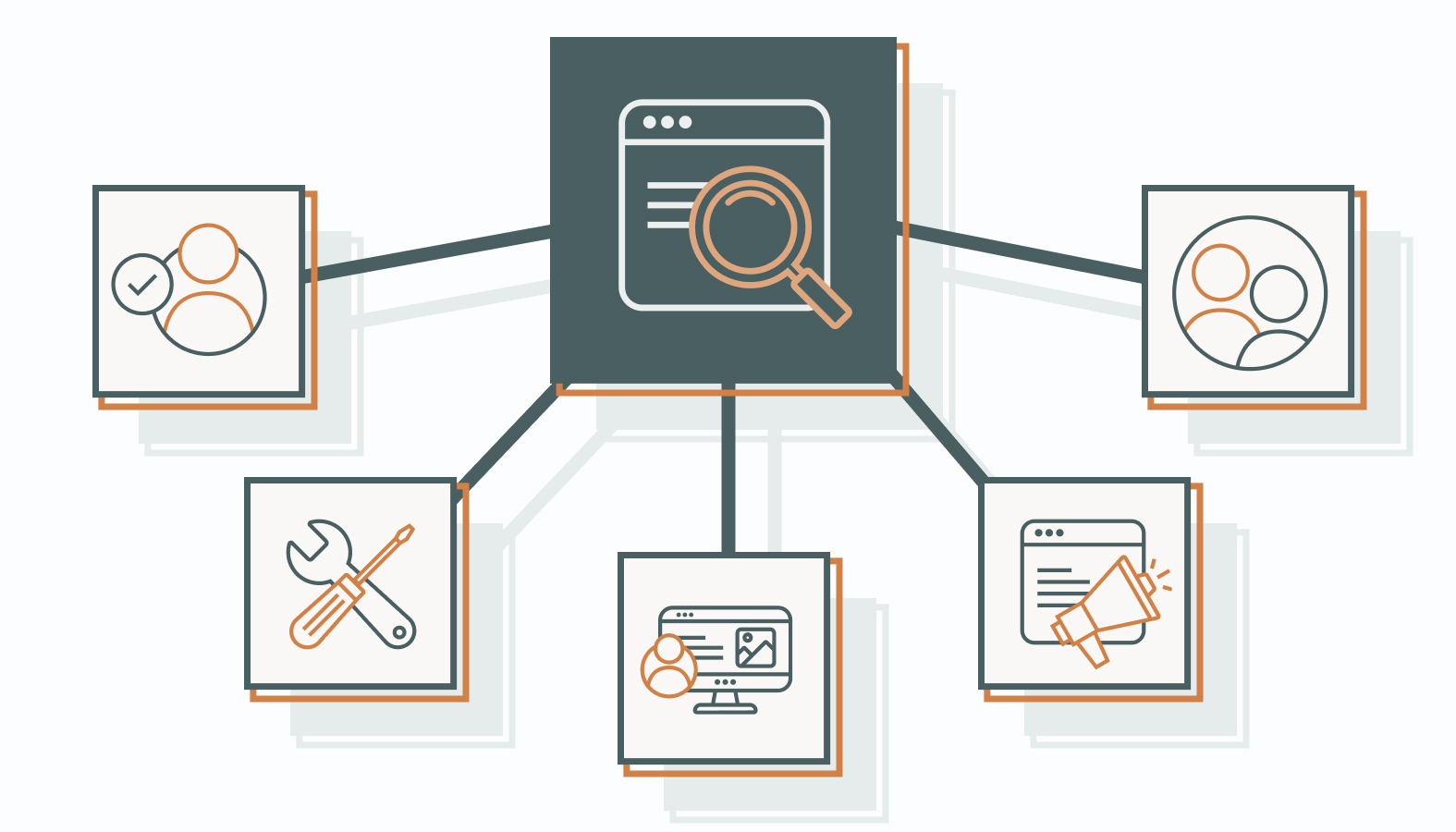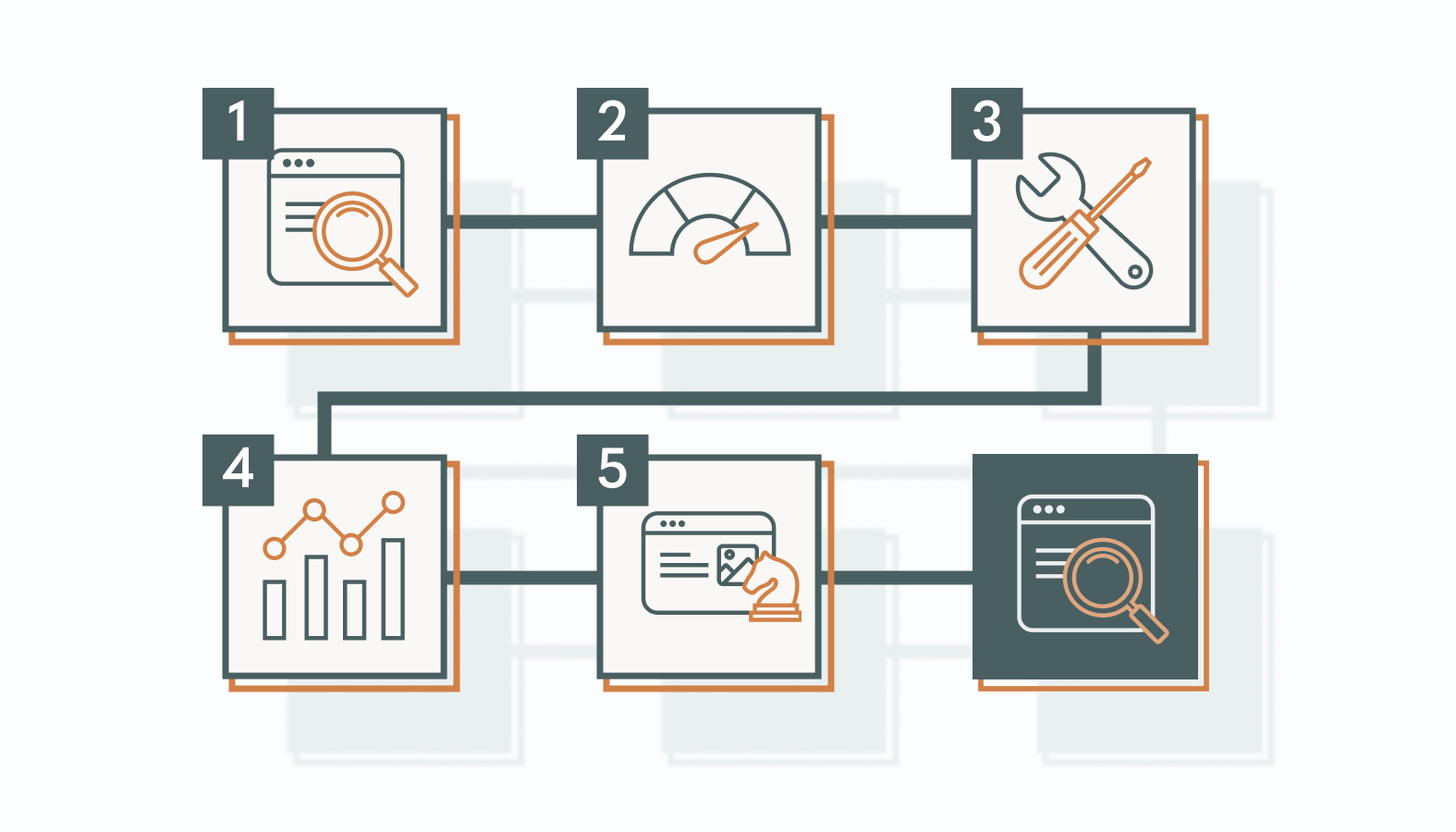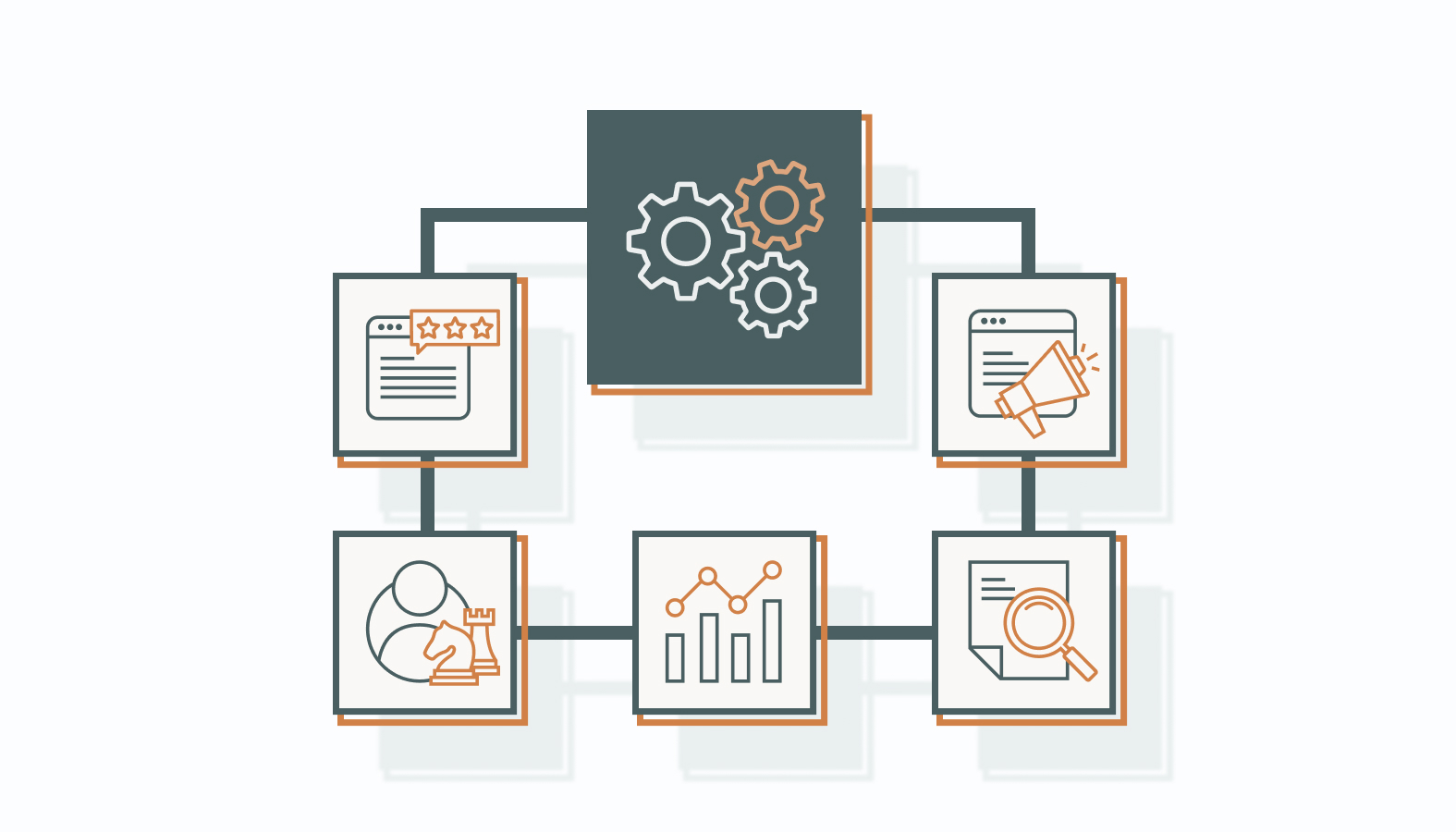Ranking your SaaS business takes more than publishing a few blog posts and hoping for the best. The competition is fierce, the algorithms are smarter, and your audience doesn’t have time to click around.
So, how do you ensure your business shines when it matters most? By crafting a smart SaaS keyword strategy that mirrors how SaaS buyers search, think, and make decisions.
Unlike traditional businesses, SaaS companies deal with longer sales cycles, evolving products, and buyers looking for clear solutions.
But the road’s packed with obstacles: intense competition, vague intent, outdated content, and keyword cannibalization. Without a targeted strategy, you’ll likely attract traffic that looks good on paper but does not convert.
This guide outlines a step-by-step approach to breaking through the noise and building a keyword strategy that drives real, measurable growth for your SaaS business.
Key Differences Between SaaS and Traditional SEO
Search engine optimization looks different when you’re marketing software instead of shoes. SaaS SEO plays by its own rules, and if you’re not adapting your strategy to match, you’re leaving growth on the table.
Navigating the Unique Challenges of SaaS SEO
Traditional businesses often sell static products with predictable life cycles. SaaS companies, on the other hand, operate in a state of constant evolution. Product features update frequently, messaging pivots with every sprint, and competitive landscapes shift overnight.
This rapid pace demands an SEO strategy that’s agile, flexible, and fully aligned with your product roadmap. Content must evolve in real time to ensure accuracy and continued relevance in a competitive landscape.
Conquering the High Competition in SaaS Markets
SaaS is saturated. Because you have numerous, well-funded, and aggressively optimized competitors, generic keyword strategies won’t work.
Winning in this space means zeroing in on niche markets, owning long-tail keywords that map to specific use cases, and building content around your unique value prop.
Think about what Slack did: it didn’t try to out-feature Microsoft Teams. It simply made team communication radically more intuitive and told that story brilliantly.
Adapting to Rapid SaaS Product Evolution
New feature? Bug fix? Pricing model tweak? In SaaS, change is the default.
Your SEO has to move at the speed of the product. This means that aside from publishing a few release notes, you have to continuously update your content to reflect what your product does today, not what it did last quarter.
SEO and product marketing must stay in sync, with keyword strategies that adapt to your roadmap.
Leveraging Long Sales Cycles with SEO
SaaS sales cycles tend to stretch. It’s rarely a one-call close, but that extra time gives you more runway to build trust and authority through content.
An effective SaaS SEO strategy leverages this window to educate, engage, and guide potential buyers down the funnel. From comparison pages to in-depth use cases, your content becomes the virtual salesperson that never sleeps; always ready to answer questions, overcome objections, and position your product as the clear choice.
Developing Effective SEO Strategies for SaaS
Great SaaS SEO goes beyond ranking for keywords. It prioritizes creating a system that aligns with how SaaS buyers research, evaluate, and buy software.
Crafting Content that Resonates with SaaS Buyers
To connect with SaaS buyers, your content needs to speak their language. That means going beyond surface-level advice to solve real problems, address nuanced pain points, and deliver actionable insights that clearly demonstrate your product’s value.
Case studies, tutorials, and customer stories can build trust and bridge the gap between interest and intent.
Utilizing Data-Driven Keyword Research for SaaS
Effective SaaS SEO starts with keyword research grounded in business impact. Tools like Ahrefs, SEMrush, and SEOmonitor help surface the terms your audience is specifically searching for and filter out vanity metrics.
The goal isn’t traffic for traffic’s sake — it’s relevance. Prioritize keywords tied to high-intent use cases, product-led queries, and clear buyer intent. Then, build a content architecture around them that supports both discovery and conversion.
Integrating SEO with SaaS Marketing Funnels
In SaaS, SEO goes far beyond top-of-funnel blogs. It’s a full-funnel strategy that sharpens every touchpoint from awareness content to conversion-ready landing pages.
Your SEO strategy should support each stage of the buyer’s journey: educating leads, validating solutions, and nudging them toward a demo or trial.
The Role of Intent in SaaS Keyword Research
In SaaS, traffic without intent is noise. Real growth comes from attracting users actively searching for solutions, preferably yours. That’s where understanding user intent transforms keyword research from a volume game into a precision tool for pipeline growth.
Identifying Buyer Intent for Effective Targeting
Effective keyword strategies start by mapping queries to intent, because not all clicks are created equal.
In SaaS, users typically fall into four intent categories:
- Informational: These users want answers. Think of searches like “how to improve team collaboration” or “best onboarding practices for remote teams.” Your blog content lives here.
- Navigational: These users already know who you are. They’re searching for brand-specific terms like “Slack login” or “Asana demo.” Optimize core pages to meet them quickly.
- Commercial: These users are weighing their options. Keywords like “Slack vs. Microsoft Teams” or “top CRM for startups” signal purchase consideration. They’re primed for product comparisons and testimonials.
- Transactional: These are the decision-makers in motion. They search for “buy project management software” or “SaaS pricing plans.” Make sure your conversion paths are airtight.
Align your keyword targeting with these stages to move users from awareness to action, without wasted clicks or missed opportunities.
Utilizing Tools to Analyze User Intent
Data removes the guesswork. Various tools provide the data you need to help analyze and interpret user search intent so that you can improve keyword selection and SEO performance.
Platforms like Google Analytics, SEMrush, and Moz are built to surface intent cues buried in search behavior and site interactions.
- Google Analytics shows how users move through your site, revealing which content meets their needs (and which sends them packing).
- SEMrush and Moz help you identify what’s ranking, why, and how it compares to competitors. Use them to reverse-engineer winning keywords by intent and funnel stage.
Don’t set and forget. Audit keyword performance often. The moment your users’ behavior shifts, your strategy should too.
Responding to Changes in User Intent
User intent is never static. Market shifts, product launches, and competitive changes all impact what your audience is searching for and why.
To stay relevant, SaaS companies should:
- Refresh Your Keyword Strategy Frequently: Trends shift fast, especially in SaaS. Schedule keyword research like you would a product sprint.
- Evolve Your Content: Update articles, expand FAQs, rewrite CTAs, whatever it takes to match evolving questions with clear, confident answers.
SaaS brands that adapt win the search war. Those that don’t fade into irrelevance.
Aligning Content Strategies with User Search Intent
Your content has one job: answer the question behind the query. Whether someone’s gathering info or ready to sign up, your page should match their mindset at each stage of their journey.
- Informational queries need blogs, guides, and explainers.
- Commercial intent calls for feature breakdowns, product comparisons, and use-case pages.
- Transactional searches should trigger frictionless paths to demo, pricing, or purchase.
Design your content like a well-oiled sales funnel: every asset mapped to user intent, and every touchpoint guiding the next step. Use clear, concise language, compelling visuals, and intuitive navigation to keep your audience engaged.
Mapping Keywords to SaaS Buyer Personas
In SaaS, decisions rarely rest on one person. You’re selling to a committee, each member with different concerns, questions, and search behaviors.
For example:
- The CFO searches for ROI. Keywords like “SaaS CRM cost-benefit” or “ROI calculator” speak their language.
- Sales reps want efficiency. They’ll Google “how to log calls in [CRM]” or “best CRM mobile app.”
- IT leads care about security and integrations. Think “CRM data encryption” or “Salesforce Microsoft 365 integration.”
To operationalize this, you must consider these:
1) Identify Your Personas: Who influences the deal: finance, IT, ops, users?
2) Uncover Their Needs: What keeps them up at night? What do they Google?
3) Translate to Search Behavior: Map these needs to keywords categorized by intent.
4) Assign to Content Types: Use playbooks, calculators, case studies, or videos (whatever format best serves each persona’s funnel stage).
When executed correctly, this SEO process drives qualified demand from genuine buyers with real problems and positions your product as the best solution.
Comprehensive SaaS Keyword Research Process
A strategic keyword research process is no longer optional but fundamental. It shapes your SaaS marketing, drives qualified traffic, and converts intent into action.
By systematically identifying and targeting the right keywords, SaaS companies can ensure their content is optimized to meet user needs, ultimately improving visibility and engagement.
1) Generate Seed Keywords Through Brainstorming
Every smart keyword strategy starts with a strong base. That means brainstorming seed keywords that capture your product’s core functions, features, and benefits, using real input from every angle of your business.
- Cross-Functional Input: Pull insights from marketing, sales, product, and customer success. Each team sees a different side of the user journey and has a different language pattern to match.
- Smart Techniques: Use mind mapping, customer feedback, word association, and product-related problem-solving to surface the terms your users already think in.
The goal is to build a solid seed list grounded in reality (not assumptions), something worth refining, not replacing.
2) Conduct Competitive Keyword Analysis
Analyzing competitor keywords should be part of your strategy. Your competitors are doing you a favor by publishing content, ranking for keywords, and showing you exactly where the bar is (and where it’s low).
- Identify and Reverse Engineer: Use tools like Ahrefs or Semrush to pinpoint which terms your competitors are ranking for (and why).
- Find the White Space: Look for keywords they’re ignoring, underserving, or not ranking well for. Those are your opportunities to outrank, out-answer, and outshine.
This analysis doesn’t mean embracing copycat content. It means understanding the market, then outperforming it with deeper relevance and stronger execution.
3) Leverage Advanced Keyword Research Tools
Keyword tools can be strategic instruments for uncovering untapped potential.
- Use the Right Stack: Platforms like Google Keyword Planner, Moz, and Semrush reveal demand, competition, and keyword intent. They also help surface adjacent terms you might miss in brainstorming.
- Prioritize by Impact: Evaluate each keyword’s potential based on volume, competitiveness, and fit with your product’s value proposition. Favor keywords that align tightly with what your audience is trying to achieve.
Forget chasing big numbers. The real play targets the right people with the right terms at the right stage of their journey.
4) Analyze Data from Google Analytics and Ads
Your analytics tell you what’s working and (tell you what to do next).
- Behavioral Clarity: Google Analytics shows which keywords bring in high-intent users, where they bounce, and where they convert. This gives you a direct line between keyword and revenue impact.
- Ads Data Sync: Google Ads data gives live performance feedback through click-throughs, conversions, and ROI by keyword. If something is winning in paid ads, there’s often an organic opportunity nearby.
By fusing organic and paid insights, you can turn your keyword list into a performance engine that improves with every iteration.
5) Use First-Party Data to Refine Keyword Strategy
While SEO tools and analytics offer great insights, your most accurate keyword signals are already inside your SaaS business.
First-party data (from users interacting directly with your product, team, or site) surfaces real-world language and intent that third-party tools often miss.
Here’s Where to Look for this Data:
- In-app searches: What are users trying to find after they’ve signed up?
- Support tickets and live chat: What recurring issues are they trying to solve?
- Sales calls and demo transcripts: What questions do they keep asking?
- Onboarding forms and feedback surveys: What are their goals in their own words?
Let’s say a recurring theme in support tickets is “export dashboard to Excel.” That signals both a UX issue and a keyword opportunity. You now have a clear title for a help article or blog post that solves the problem and ranks for the exact term.
This approach replaces guesswork with user-verified, intent-rich keyword opportunities. It’s SEO grounded in real language, taken directly from your audience’s fingertips.
Expert SaaS Keyword Optimization Techniques
Getting found online is one thing. Getting discovered by the right users, at the right time, with the right intent is a strategy. Modern SaaS keyword optimization goes beyond high-volume targets and basic metadata. It’s about precision in deploying a guided system designed to convert.
Here’s how high-performing SaaS brands optimize their content to dominate search and win demand.
Use Customer Feedback to Sharpen Keyword Relevance
Customer feedback is a goldmine for uncovering valuable keyword opportunities that closely align with user language and intent.
- Gathering Feedback: Utilize surveys, feedback forms, and customer interviews to collect insights. Pay attention to the language customers use to describe problems, features, and benefits.
- Analyzing Feedback: Look for common themes and phrases that can be transformed into keywords. For example, if customers frequently mention “easy collaboration,” consider this a potential keyword.
Integrating customer feedback into your keyword strategy leads to more relevant and effective keywords, as it reflects your audience’s actual language and needs. This alignment increases the likelihood of attracting and engaging the right audience.
Build Topic Clusters with Strategic Intent
Building topic clusters is an excellent method for building topical authority and guiding users through the funnel.
Start with a pillar page that provides an in-depth overview of a core theme (e.g., “project management software”). Then build out supporting content, including blog posts, case studies, and comparison guides to target related subtopics like “task prioritization features” or “project visibility for stakeholders.”
Each cluster piece links back to the pillar and vice versa. This signals to search engines that you’ve covered the topic thoroughly and creates a seamless experience for users exploring related information.
When executed correctly, topic clusters strengthen internal linking, improve crawl depth, and help your site rank across a broader set of keywords, all while keeping users engaged longer.
Leverage AI for Deeper, Faster Keyword Discovery
AI tools aren’t a magic wand, but they are a serious upgrade for keyword research.
Modern platforms like Clearscope, MarketMuse, and BrightEdge can surface semantically related terms, evaluate topical gaps, and prioritize opportunities based on intent and competitive positioning.
These tools automate research and enhance it by analyzing massive datasets at speed. That means less time buried in spreadsheets and more time executing on insight-rich strategy.
Choose tools that integrate with your content workflow and offer real-time feedback on search intent, relevance, and ranking potential. You’ll spend less time guessing and more time winning the clicks that count.
Eliminate Keyword Cannibalization Before It Slows You Down
When multiple pages compete for the same keyword, they dilute each other’s authority, and your performance suffers.
Use Google Search Console or Ahrefs to identify cannibalization issues: pages with overlapping rankings for the same term. Then audit that content.
In most cases, you’ll want to consolidate or differentiate. Merge redundant content into a single, stronger asset, or refine each page to target distinct but related intents.
For instance, if you have two pages about “SaaS pricing models,” one can focus on the strategy for startups, while the other explores enterprise pricing structures. No more fighting for the same space.
Cleaning up cannibalization ensures that each page on your site has a clear purpose, supports a specific keyword set, and contributes to your domain authority rather than competing against it.
Build Content Hubs Around High-Intent Keywords
If you’re still publishing one-off blog posts and hoping for SEO traction, you’re missing out on revenue.
High-intent keywords deserve more than casual treatment. They need fully developed content hubs: centralized ecosystems of value-rich, interlinked content designed to capture, convert, and compel.
A strong content hub:
- Targets a commercially valuable topic.
- Answers every related question a buyer might research.
- Supports internal linking across all funnel stages.
- Builds topical authority that algorithms reward.
Let’s say you’re a CRM platform. A content hub around “sales pipeline management” might include:
- A pillar page explaining what it is, why it matters, and who it’s for.
- Deep-dive content like “Top Sales Pipeline Tools for SMBs.”
- Tactical use cases like “How to Automate Your Sales Pipeline.”
- Pain-point content like “Why Your Forecasts Keep Failing.”
- Tools and templates like a “Pipeline ROI Calculator.”
Each piece should map to a different layer of intent (awareness, consideration, or decision) while reinforcing the same core theme. Doing this is a deliberate strategy to dominate high-value SERPs, reduce bounce rates, and guide users straight to your product’s value.
When done right, content hubs help you rank and lead, turning your SaaS site into a category authority.
Targeting SaaS Keywords Across the Buyer Funnel
Keyword targeting intercepts potential customers at every critical point of their decision-making journey. In SaaS, this means crafting content that matches intent with precision, stage by stage, from curious to committed.
Identifying Awareness Stage Keywords
At the top of the funnel, prospects are problem-aware but solution-agnostic. They’re searching for clarity, not commitments.
- Keyword Focus: Broad, informative queries like “how to improve remote team productivity,” “best project management practices,” or “ways to streamline workflow.” These searchers aren’t ready to buy. They’re gathering intel.
- Content Strategy: Create content that informs and positions your brand as a trustworthy expert. Think blog posts, industry insights, and how-to resources. A well-written article like “10 Ways to Boost Remote Team Collaboration” attracts traffic and earns trust.
If you consistently answer the right questions early, you become the default guide as prospects move forward.
Engaging Consideration Stage Keywords
At this point, the prospect is narrowing down options. They know the category, and now they want to know which solution best fits.
- Keyword Focus: Comparison and evaluation terms, such as “Slack vs. Microsoft Teams,” “top SaaS tools for team communication,” and “project management software reviews.”
- Content Strategy: Meet this moment with decision-enabling content. Publish comparison guides, case studies, and product roundups. For example, “Slack vs. Microsoft Teams: Which Is Better for Hybrid Teams?” helps buyers filter choices and associate your brand with clarity, not confusion.
The goal is to lead them through the noise, not add to it.
Converting Decision Stage Keywords
Now they’re ready to act. They’ve done the research. They’re looking for proof, value, and a reason to hit “buy.”
- Keyword Focus: Transactional terms like “buy SaaS project management tool,” “Slack pricing breakdown,” “best SaaS deals.”
- Content Strategy: This is where conversion-focused content does the heavy lifting. Create landing pages with demos, customer testimonials, and special offers. Reinforce value and eliminate friction. A targeted page featuring a demo and a time-sensitive discount doesn’t cheapen your offer; it reinforces it through well-thought-out conversion architecture.
Your content here should do what your best salesperson would: close confidently.
Continuous Keyword Optimization: Building a Feedback Loop That Scales
SEO is not a one-and-done project. Consider it a performance engine that can withstand market shifts, algorithm changes, and evolving competitors. Without a feedback loop, your keyword strategy will fall behind.
Set a cadence. Review performance monthly or quarterly. Start with a quick audit:
- Are priority terms climbing or slipping?
- Which pages are driving traffic but not engagement?
- Where are users bouncing, lingering, or converting?
Take action:
- Refresh titles, headers, and CTAs to match search behavior better
- Update outdated content with current features, benefits, or use cases
- Expand thin pages or split bloated ones based on analytics
- Test new formats or add internal links to elevate underperformers
- Surface long-tail terms from the search console or customer conversations
Then, go beyond keyword rankings. Track metrics that reflect value: click-through rate, bounce rate, scroll depth, average time on page, and assisted conversions. These show whether your content is doing its job or not.
This iterative approach is how SaaS brands build high-performing, revenue-generating SEO ecosystems, not stagnant content libraries.
Implementing a Winning SaaS Keyword Strategy for Sustainable Growth
In SaaS, just showing up on search won’t cut it. Sustainable growth demands a keyword strategy engineered for precision, not patched together on the fly.
A high-performing SaaS keyword framework does more than attract clicks. It sharpens your visibility, drives high-intent traffic, and anchors your brand as the category leader. When built right, it’s a scalable growth infrastructure.
Here’s what sets winning strategies apart:
- Intent-Led Precision. Keywords aren’t guesses; they’re signals. Aligning content intent across every funnel stage ensures relevance, trust, and traction.
- Advanced Intelligence in Play. AI and deep keyword analysis unlock competitive gaps others miss. Think less trend-chasing, more real-time strategic calibration.
- Voice of the Customer, Embedded. Your customers are already telling you what they’re searching for. Bake that language into your strategy, and you’ll stop guessing and start resonating.
- Full-Funnel Cohesion. From awareness to conversion, a connected content strategy mapped to buyer behavior ensures every keyword earns its keep.
- No Cannibalization, No Confusion. Every page has a purpose. Overlap gets resolved, silos get broken, and your domain authority goes to work.
There is no theory here, only scalable SEO execution. When SaaS companies invest in the right keyword architecture, they rank purposefully, convert more effectively, and build lasting momentum as market leaders.
Turn Keyword Strategy into Growth
SaaS growth won’t be from chasing every keyword. It comes from consistently targeting the right ones with strategic intent.
A rigorous keyword strategy does more than move your rankings. It elevates your brand, filters out noise, and attracts decision-ready buyers with high conversion potential.
Want to see how this works for your SaaS product? We’ll discuss your goals, assess your current content landscape, and architect a keyword framework that delivers measurable returns quickly.
Schedule a candid conversation with one of our experts.» Let’s identify the keyword moves that will unlock traction and give you a winning edge in your market.










